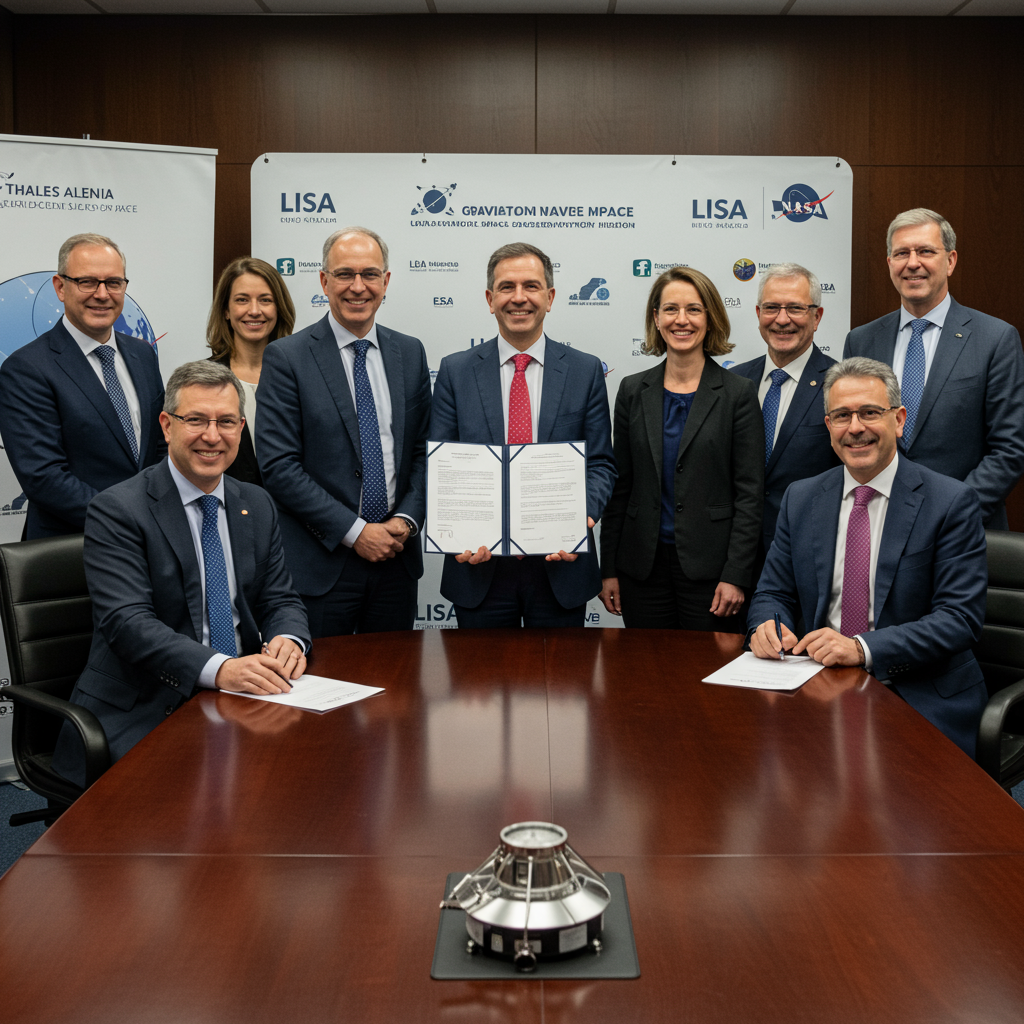NASA stands at the precipice of a new era in human space exploration, electrifying the world with pivotal announcements this week. The agency is set to introduce its newest class of astronaut candidates, handpicked to push the boundaries of discovery. Simultaneously, crucial updates on the ambitious Artemis 2 lunar mission will chart the course for humanity’s return to the Moon. These events collectively underscore NASA’s unwavering commitment to lunar exploration and future crewed missions to Mars, inviting the public to witness history in the making.
Charting the Future: NASA’s 2025 Astronaut Class Revealed
The excitement commenced on Monday, September 22, with the official unveiling of NASA’s 2025 astronaut class. This marks the 24th group in NASA’s distinguished history and the first selection since 2021. From an astounding pool of over 8,000 highly qualified applicants, ten exceptional individuals — five men and five women — were chosen. This class, notable for featuring more women than men for the first time, showcases NASA’s dedication to diversity in its elite corps. The ceremony, held at NASA’s Johnson Space Center in Houston, highlighted the intense competition and rigorous selection process. Norm Knight, NASA’s flight operations director, lauded the chosen candidates as “distinguished” and “exceptional,” poised to inspire the nation and the world.
A New Generation for Deep Space
These new astronaut candidates are not just embarking on a career; they are stepping into history. Their journey begins with an intensive, two-year training program at JSC. This demanding regimen will equip them with essential skills for spaceflight, including spacewalk expertise, engineering prowess, and survival training for challenging environments. Their graduation is strategically timed to coincide with NASA’s target for the Artemis 3 mission, which aims to land astronauts on the Moon.
While these new recruits will gain invaluable experience, they are not slated for Artemis 3 itself due to the steep learning curve. However, they are positioned for crucial roles in subsequent phases of the Artemis program. This includes establishing a sustained human presence on the lunar surface. NASA envisions the Moon as a vital proving ground for future crewed expeditions to Mars. Indeed, some members of this new class could one day become the first humans to set foot on the Red Planet, fulfilling humanity’s enduring dream of interplanetary travel.
Diverse Talents Ready for Orbit and Beyond
The newly announced astronaut class brings an incredible depth of experience and diverse backgrounds to NASA’s mission. Their collective expertise spans various cutting-edge fields, reflecting the multifaceted challenges of modern space exploration.
Among them are:
Ben Bailey (38): A U.S. Army Chief Warrant Officer 3, a test pilot with extensive flight hours.
Lauren Edgar (40): A geologist with 17 years of experience on NASA’s Mars rover missions. She also served as the deputy principal investigator for the Artemis 3 Geology Team, bringing crucial planetary science expertise.
Adam Fuhrmann (35): A U.S. Air Force Major with significant combat flight hours and aerospace engineering background.
Cameron Jones (35): Another U.S. Air Force Major and test pilot, contributing vast flight experience.
Yuri Kubo (40): An electrical engineer and former SpaceX launch director for Falcon 9 missions, later a senior VP of engineering.
Rebecca Lawler (38): A former U.S. Navy Lieutenant Commander and experimental test pilot, with experience as a “hurricane hunter” for NOAA.
Anna Menon (39): A biomedical engineer who supported ISS medical hardware. Notably, she has already flown to space on SpaceX’s Polaris Dawn mission in 2024, participating in the first-ever private spacewalk.
Imelda Muller (34): A former U.S. Navy Lieutenant and anesthesiologist, bringing critical medical knowledge.
Erin Overcash (34): A U.S. Navy Lieutenant Commander, aerospace engineer, and former USA Rugby Women’s National Team member.
Katherine Spies (43): A U.S. Marine Corps AH-1 attack helicopter pilot and experimental test pilot with chemical and design engineering degrees.
This blend of military aviation, engineering, geology, medicine, and private spaceflight experience ensures a robust and adaptable team for the challenges ahead. These individuals will not only contribute to deep space missions but are also likely to lead the way in a new era for low Earth orbit (LEO). With the International Space Station (ISS) set for retirement around 2030 or 2031, NASA plans to shift its LEO operations to commercial space stations developed by private companies. This new class could be among the first NASA astronauts to live and work on these private outposts, marking a significant transition in space operations.
Artemis 2: Paving the Way Back to the Moon
Following the astronaut class announcement, attention shifted to the eagerly anticipated Artemis 2 mission. NASA scheduled online events for Tuesday, September 23, and Wednesday, September 24, to discuss this crucial lunar circumnavigation. Artemis 2 is projected for an early 2026 launch. This mission will send four astronauts on a journey looping around the Moon, a vital precursor to future lunar landings.
Tuesday’s agenda featured two significant briefings, providing in-depth insights into the mission:
10 a.m. EDT (1400 GMT): Artemis 2 Mission Overview Briefing. This session offered a strategic look into the mission’s scope. Participants included Lakiesha Hawkins, acting deputy associate administrator for Exploration Systems Development Mission Directorate, and Charlie Blackwell-Thompson, Artemis launch director at Kennedy Space Center (KSC). Other key figures included Judd Frieling, lead Artemis 2 ascent flight director from Johnson Space Center (JSC), and Daniel Florez, test director for Exploration Ground Systems at KSC.
12 p.m. EDT (1600 GMT): Artemis 2 Science and Technology Briefing. This discussion focused on the scientific objectives and technological innovations integral to the mission. Matt Ramsey, Artemis 2 mission manager, and Debbie Korth, deputy Orion Program manager, were among the panelists. They highlighted advancements in areas like the Orion spacecraft and new scientific instruments. Jacob Bleacher and Mark Clampin also contributed, discussing broader science and technology utilization efforts.
The Historic Crew of Artemis 2
The culminating event took place on Wednesday, September 24, at 10 a.m. EDT (1400 GMT). An Artemis 2 crew news conference formally introduced the four astronauts selected for this historic lunar journey. The crew embodies a remarkable blend of experience and diversity, setting new precedents in human spaceflight.
The trailblazing Artemis 2 crew includes:
Reid Wiseman (NASA) as Commander
Victor Glover (NASA) as Pilot
Christina Koch (NASA) as Mission Specialist
Jeremy Hansen (Canadian Space Agency) as Mission Specialist
This crew makes history in multiple ways: Victor Glover will become the first Black astronaut to participate in a lunar mission. Christina Koch will be the first woman to fly around the Moon. Jeremy Hansen will be the first non-American astronaut to undertake a lunar mission. These milestones underscore the international and inclusive nature of NASA’s ambitious exploration goals. Their journey will validate deep space systems and operations, laying critical groundwork for future Moon and Mars voyages.
The Broader Vision: Sustained Lunar Presence and Mars
NASA’s renewed focus on the Moon is not merely a return but a strategic step towards deeper space exploration. Acting Administrator Sean Duffy asserted, “We are going back to the Moon. This time, we’re going to stay.” He emphasized that the lessons learned on the Moon will be crucial for the ultimate journey to Mars and “beyond, into the unknown.” Duffy also highlighted the competitive aspect of the space race, stating the U.S. will “win” against other nations like China.
The Moon is strategically important for its abundant resources, including hydrogen and rare earth elements. Furthermore, it is envisioned as a vital “launch pad” or “gateway to the solar system” for missions venturing beyond Earth’s orbit. NASA’s Artemis program plans to establish a “sustained long-term presence on the lunar surface” over the next decade. This presence aims to foster a program of lunar exploration and development, yielding both economic and scientific rewards.
Crucially, the Moon also presents geological challenges. Recent discoveries by astronomers, utilizing before-and-after satellite imagery, have revealed landslides directly triggered by moonquakes. These findings suggest the Moon is more seismically active than previously thought. Scientists from China observed 41 new landslides since 2009, each about 1 kilometer long. While smaller than Earth’s landslides, the Moon’s dry, airless environment means moonquake shockwaves can persist for hours, posing a prolonged threat to future lunar infrastructure. This critical insight will inform the selection of safe landing sites and the construction of permanent lunar bases, a goal shared by international partners like China and Russia at the lunar South Pole by 2035.
Frequently Asked Questions
What is the significance of this new NASA astronaut class for future space missions?
This 2025 NASA astronaut class, the first since 2021 and the 24th in the agency’s history, is crucial for humanity’s future in space. These ten new recruits, chosen from over 8,000 applicants, will undergo two years of rigorous training. They are being prepared for a diverse range of missions, from working on the International Space Station to supporting the Artemis program’s return to the Moon. Ultimately, members of this elite group are expected to play pivotal roles in establishing a sustained human presence on the lunar surface and could potentially be among the first humans to journey to Mars. Their selection reinforces NASA’s commitment to ambitious deep space exploration goals.
How can I watch or get more details about NASA’s upcoming Artemis 2 mission briefings?
NASA made all the significant announcements and briefings, including the Artemis 2 mission updates, available for live broadcast. These events, held from September 22 to 24, were streamed on various platforms. Viewers could tune in via NASA’s official YouTube channel, the agency’s X account, NASA+, Netflix, and Amazon Prime. The schedule included an Artemis 2 mission overview briefing on Tuesday, September 23, at 10 a.m. EDT, followed by a science and technology briefing at 12 p.m. EDT. The historic Artemis 2 crew news conference was held on Wednesday, September 24, at 10 a.m. EDT. Specific details, including participant lists and exact timings, were provided by NASA through official channels like Space.com.
What kind of training do new NASA astronaut candidates undergo before becoming eligible for missions?
New NASA astronaut candidates embark on an intensive, approximately two-year training program at NASA’s Johnson Space Center (JSC) in Houston. This comprehensive regimen is designed to prepare them for the multifaceted demands of spaceflight. Key areas of training include mastering complex spaceflight systems, developing proficiency in spacewalks (Extravehicular Activity or EVA), gaining in-depth engineering knowledge, and undergoing survival training for various challenging environments. Upon successful completion of this rigorous program, these candidates are officially certified as eligible for assignment to future space missions, ranging from International Space Station deployments to lunar missions as part of the Artemis program, and ultimately, potential voyages to Mars.
Conclusion
This week’s announcements from NASA mark a thrilling new chapter in human space exploration. The introduction of a highly skilled and diverse astronaut class, coupled with detailed plans for the historic Artemis 2 moon mission, ignites excitement for humanity’s future among the stars. As these new astronauts begin their arduous training and the Artemis 2 crew prepares for their lunar circumnavigation, the vision of a sustained human presence on the Moon and the ultimate journey to Mars draws ever closer. NASA continues to inspire, pushing the boundaries of what is possible and inviting us all to watch as the next generation of explorers takes flight.




